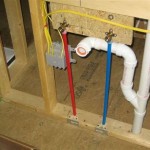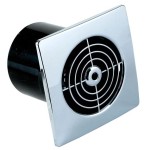Replacing Your Bathroom Sink Faucet: A Step-by-Step Guide
Replacing a bathroom sink faucet can be a rewarding DIY project, offering a fresh look and updated functionality to your bathroom. The process is relatively straightforward, requiring basic tools and some patience. This guide provides a step-by-step breakdown, covering everything from planning to finishing touches.
Assessing Your Needs and Choosing the Right Faucet
Before jumping into the replacement process, consider the following factors to ensure a smooth transition:
- Functionality: Determine what features you need, such as single-handle or double-handle, hot and cold water control, and any additional features like a pull-down sprayer or a built-in soap dispenser.
- Style: Choose a faucet that complements your bathroom's design, considering the overall aesthetic and existing fixtures like the sink, vanity, and hardware.
- Budget: Faucet prices vary significantly based on materials, features, and brand. Set a reasonable budget and research options within your price range.
- Installation: Ensure that the new faucet is compatible with your existing sink and plumbing setup. Check the specifications and installation instructions to avoid compatibility issues.
The Replacement Process: A Step-by-Step Guide
Once you have chosen the new faucet, follow these steps for a successful replacement:
- Gather your tools: You will need a set of adjustable wrenches, a channel-lock pliers, a Phillips head screwdriver, a flathead screwdriver, a plumber's tape, a basin wrench, and a level.
- Turn off the water supply: Locate the shut-off valves for your bathroom sink, typically found under the sink or on the wall. Turn both the hot and cold water valves fully clockwise to shut off the water supply.
- Drain the water: Open the faucet to drain any remaining water in the lines. If the faucet has a drain stopper, remove it and discard the water.
- Disconnect the old faucet:
- Use wrenches to loosen and disconnect the supply lines from the old faucet's stems.
- Remove the faucet handles and any decorative caps.
- Use a basin wrench to loosen and remove the mounting nuts holding the faucet to the sink.
- Carefully disconnect the drain assembly from the faucet and the sink, ensuring you preserve the connecting parts for the new faucet.
- Prepare the new faucet: Remove the protective packaging and inspect the new faucet for any missing parts or defects. Review the installation instructions provided by the manufacturer.
- Install the new faucet:
- Apply plumber's tape to the threaded ends of the new faucet's stems, ensuring a tight seal when connecting the supply lines.
- Connect the new faucet's supply lines to the water shut-off valves, ensuring a secure connection with the wrenches.
- Attach the new faucet to the sink, using the mounting nuts and the basin wrench, ensuring the faucet is centered and level.
- Connect the drain assembly to the new faucet and the sink, following the instructions provided with your specific faucet.
- Turn on the water: Slowly open the shut-off valves for the hot and cold water supply, checking for any leaks at the connections. Tighten any loose connections as needed.
- Test the new faucet: Run the hot and cold water to ensure proper functionality and check for any leaks. If leaks persist, carefully tighten the connections or consult a plumber for assistance.
Maintenance and Care
Regular maintenance of your new faucet is essential to prolong its lifespan and ensure optimal performance. Follow these maintenance tips:
- Clean regularly: Use a soft cloth and a mild dish soap solution to wipe down the faucet's exterior, removing any water spots or mineral deposits.
- Check for leaks: Periodically inspect the connections for leaks and tighten them as necessary to prevent water damage.
- Lubricate moving parts: Apply a small amount of silicone lubricant to the faucet's moving parts, such as the handles and cartridges, ensuring smooth operation.
- Avoid harsh cleaners: Avoid using harsh chemicals or abrasive cleaners that can damage the faucet's finish.

How To Replace A Bathroom Faucet Moen Single Handle Install

Diy How To Replace A Bathroom Sink Faucet Remove Install

How To Replace A Bathroom Faucet Removal And Installation

How To Replace Install Bathroom Sink Faucets Easy Diy Home Upgrade

How To Replace A Bathroom Faucet Tinged Blue

How To Replace Your Bathroom Faucet Plumbcraft Series With Penny

How To Remove And Install A Bathroom Faucet

Bathroom Faucet Replacement For Beginners Making Maanita

How To Remove And Install A Bathroom Faucet

How To Install A New Bathroom Faucet In Pedestal Sink Moendiyer Simply Designing With Ashley







